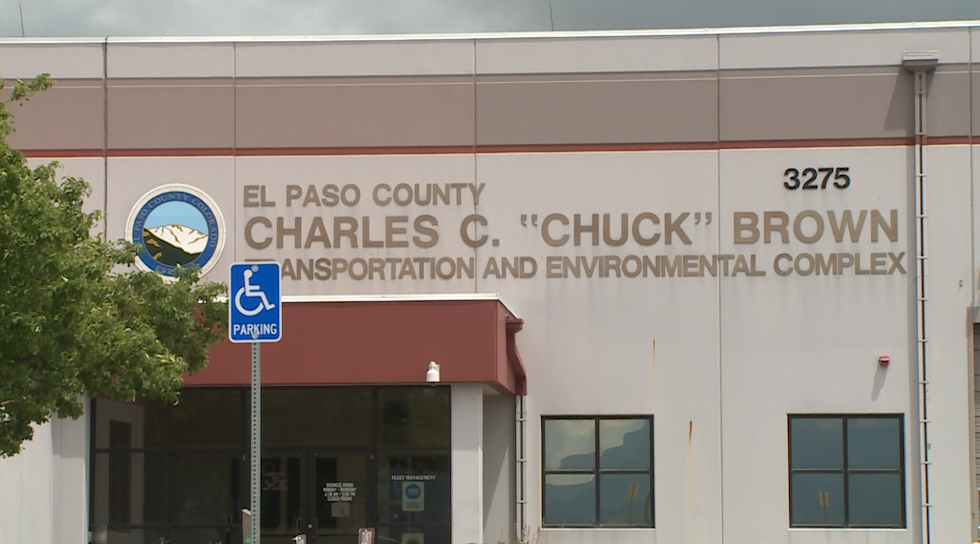Progress made in reducing threat of flash flooding since the 2012 Waldo Canyon Fire
COLORADO SPRINGS, Colo. (KRDO) -- During the first few months after the Waldo Canyon Fire, the area -- which had been extremely dry -- received some of its heaviest rainfall in recent memory, causing severe flash flooding on U.S. 24 in Ute Pass and in Manitou Springs.

That flooding was worsened by the wildfire's burn scar, where vegetation that normally absorbed much rainfall was burned away and led to heavy flows of runoff, sediment and debris that caused damage in Manitou and closed the highway on several occasions.

With heavy rain in the area Thursday, it's a good time to review the flood control measures that have been taken to reduce the risk of damage, closures and traffic impacts.
Many people who have moved into the area since 2012 may not realize how the aftermath of a major wildfire and heavy rain affected people here at the time.

Two of the most infamous areas for flash flooding are a section of Siferd Boulevard, near the intersection of Academy Boulevard and Austin Bluffs Parkway, and a block of Tia Juana Street, along Platte Avenue just west of Citadel Mall.
Siferd Blvd. lies within a pocket of unincorporated El Paso County surrounded by the city limits, and was a frequent place for stalled vehicles and rescues during flash floods.

Several years ago, authorities placed gates around the flood-prone area that can be closed to keep vehicles out of high water. The long-term options are to permanently close the area to traffic, or spend up to $20 million to improve drainage there.
As for Tia Juana Street, the city said that the solution was to improve drainage to the east along Chelton Road -- another area vulnerable to flash flooding -- before increasing the capacity of drainage on Tia Juana in a project expected to be completed by the end of the year.

Richard Mulledy, the city's stormwater manager, said that around $50 million has been spent on flash flood mitigation, including on a current project at the lower end of Bear Creek near 8th Street and Motor City.
"Our projects do a couple of things," he said. "One is, get detention in certain areas. To detain floodwater, release it slowly after the event. The other thing we've done is to come back to some of the creeks and channels that we have, and tried to repair them, put armoring in them, stabilize them so they can handle those flows. That includes stabilizing creek banks to prevent erosion."

However, Mulledy warned that many homeless people live along waterways, and some creeks and streams are beside bike paths, walkways and trails used for exercise and recreation by the public.
"Here along Bear Creek are two tunnels under 8th Street," he said. "Those tunnels are in the flood plain and will be under water if there's a severe weather event. It's important for people who use these areas to know where they are and be aware of the weather forecast. Those are not places to be in a flash flood."

Kevin Mastin, El Paso County's executive director of public works, said that the county is improving drainage and upgrading culverts to reduce flash flooding.

"There is a drainage requirement with every development that's built," he said. "Every one of them is going to be unique depending on where that development is built, but you will see drainage that's appropriate and sufficient for a particular development. That's important as we continue to grow."

The Colorado Department of Transportation also has invested heavily in flood mitigation after flooding. debris flows and even flash flood warnings closed U.S.24 several times shortly after the Waldo Canyon Fire.
CDOT built mitigation projects in and near Waldo Canyon along the highway, and in Williams Canyon into Manitou Springs.

"The combination of those projects and the recovery of the burn scar has things falling into place as we had hoped," said CDOT spokeswoman Michelle Peulen. "But again, that doesn't mean we're immune from it. It still could happen. So when there is that flash flood warning or watch, you should be aware when you're in the canyon."

Peulen said that CDOT sends crews into Ute Pass along the highway to check conditions during flash flood warnings, and the agency also installed a series of gates that can be used to close sections of the highway during an emergency.
